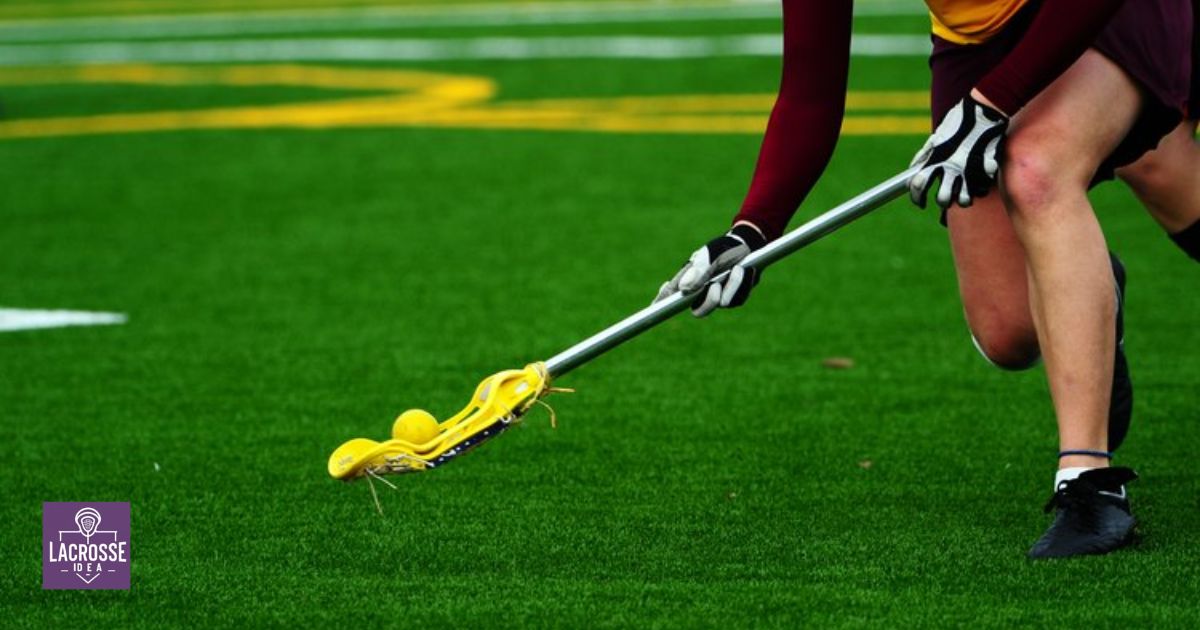Field hockey and lacrosse are two sports that share similarities in game format, equipment, and skill requirements. Both sports involve using a stick to maneuver a small ball, aiming to score goals. If you are a fan of one of these sports, you might find the other equally intriguing. This article aims to explore the commonalities between field hockey and lacrosse, delving into their origins, rules of play, and the significance of stick skills.
Whether you are a current player, a curious spectator, or simply seeking to expand your knowledge of different sports, this exploration will provide you with valuable insights into what makes field hockey and lacrosse unique and captivating. So, join us as we embark on this journey into the world of these exhilarating stick sports.
Key Takeaways
- Field hockey and lacrosse are both stick sports played on a field, involving two teams competing to score goals.
- Both sports require quick thinking, agility, and teamwork.
- Field hockey players use a stick to move the ball across the field and shoot it into the opponent’s goal, while lacrosse players use a stick with a net to catch, carry, and pass a small rubber ball into the opponent’s goal.
- Both sports prioritize the safety of their athletes, with players wearing protective gear and referees and coaches playing a crucial role in maintaining safety during gameplay.
Similar Game Formats
Field hockey and lacrosse share similar game formats, incorporating fast-paced gameplay and team strategies. Both sports are played on a field with two teams competing to score goals. In field hockey, players use a stick to move the ball across the field and aim to shoot it into the opponent’s goal. Lacrosse, on the other hand, involves players using a stick with a net to catch, carry, and pass a small rubber ball, with the objective of scoring by shooting the ball into the opponent’s goal.
These sports require quick thinking, agility, and teamwork as players navigate the field, strategize plays, and work together to outscore their opponents. As we explore further into the world of stick sports, we will discover other exciting games that share common elements with field hockey and lacrosse.
Stick Sports List
Both field hockey and lacrosse belong to a group of stick sports that involve players using specialized equipment to manipulate a ball or puck. These stick sports encompass a variety of games that are played worldwide. Some popular stick sports include ice hockey, where players use a stick to control a puck on an ice rink; bandy, a similar sport played on a larger ice surface; and hurling, a traditional Irish game that combines elements of field hockey and lacrosse.
Additionally, shinty, a sport played mainly in Scotland, features players using a stick to hit a ball towards goals. Other stick sports include floorball, a fast-paced indoor sport, and camogie, a variation of hurling played exclusively by women. These stick sports provide a sense of belonging and camaraderie among players who share a passion for manipulating a ball or puck with a stick.
Popular Ball Games
Stick sports such as field hockey and lacrosse are just a few examples of popular ball games that require players to use specialized equipment to manipulate a ball or puck. These sports not only provide thrilling competition but also foster a sense of belonging and camaraderie among players and fans. Here are some other popular ball games that offer a similar experience:
| Sport | Equipment required | Number of players |
|---|---|---|
| Soccer | Ball | 11 |
| Basketball | Ball, hoop | 5 |
| Baseball | Ball, bat, gloves | 9-10 |
Whether it’s the global appeal of soccer, the fast-paced action of basketball, or the strategic play of baseball, these ball games bring people together and create a sense of community. Now, let’s delve into the origins of these sports and explore their rich history.
Origins Of The Sports
The origins of field hockey and lacrosse can be traced back to ancient civilizations, where these sports were played with different variations and rules. Field hockey has its roots in ancient Egypt, with evidence of similar stick-and-ball games being played as early as 4,000 years ago. In ancient Greece, a similar game called “episkyros” was played, involving two teams trying to score goals with a ball.
Lacrosse, on the other hand, originated among Native American tribes, particularly the Iroquois and Algonquin nations. The game served various purposes, including spiritual, social, and diplomatic. It was often played as a way to resolve conflicts, strengthen alliances, and prepare warriors for battle. These ancient civilizations laid the foundation for the development and evolution of field hockey and lacrosse into the sports we know today.
Rules Of Play
Field hockey and lacrosse have distinct rules of play that govern the way the game is conducted and provide structure for players to compete. These rules ensure fair and safe gameplay, while also adding an element of strategy and skill. Here are some key rules that define these sports:
- In field hockey, players use a stick to hit a small ball into the opponent’s goal, while defending their own goal. The game consists of two halves, each lasting 35 minutes, with teams aiming to score the most goals.
- In lacrosse, players use a stick with a net to catch, carry, and pass a small rubber ball. The objective is to score goals by shooting the ball into the opponent’s net. Games typically consist of four quarters, each lasting 15 minutes.
These rules provide a framework for players to compete and showcase their abilities in a structured and organized manner.
Safety Considerations
When it comes to ensuring a safe playing environment, both field hockey and lacrosse prioritize the well-being of their athletes. Safety considerations are of utmost importance in these sports, as they involve physical contact and the use of specialized equipment. To minimize the risk of injuries, both sports have implemented rules and regulations that focus on player safety. For instance, both field hockey and lacrosse require players to wear protective gear such as helmets, mouthguards, and padding.
Additionally, referees and coaches play a crucial role in maintaining safety during gameplay by enforcing rules and penalizing unsafe behavior. Furthermore, both sports emphasize proper technique and training to reduce the likelihood of accidents. By emphasizing safety measures, field hockey and lacrosse foster a sense of belonging and provide athletes with a secure environment to enjoy their chosen sport.
Differences Between Field Hockey And Lacrosse
A clear distinction between field hockey and lacrosse lies in their gameplay dynamics and equipment requirements. While both sports involve a ball and are played on a field, there are several key differences that set them apart. Here are some notable distinctions:
- Sticks: Field hockey players use a J-shaped stick with a flat side to control and hit the ball, while lacrosse players use a longer stick with a net to catch, carry, and pass the ball.
- Scoring: In field hockey, goals are scored by hitting the ball into the opponent’s net. In lacrosse, players must shoot the ball into the opponent’s net using their sticks.
- Contact: Lacrosse allows more physical contact between players, while field hockey focuses more on skill and finesse.
- Protective gear: Lacrosse players wear helmets, shoulder pads, and gloves, while field hockey players wear shin guards, mouthguards, and face masks.
- Field size: Field hockey is typically played on a larger field than lacrosse, allowing for different strategies and gameplay dynamics.
Understanding these differences can help individuals choose the sport that aligns with their preferences and desired level of physicality.
Physical Contact In The Sports
In terms of physicality, both field hockey and lacrosse have distinct levels of contact within their gameplay. While both sports involve physical contact, the degree and nature of contact differ between the two. In field hockey, players are allowed to use their sticks to tackle opponents and intercept passes, but body-to-body contact is generally discouraged. The focus is more on skillful stickwork and positioning.
On the other hand, lacrosse is a sport that permits more physical contact. Players can body check opponents with their shoulders and use their sticks to block or dislodge the ball. The physicality in lacrosse adds an element of excitement, intensity, and strategic play. It creates a sense of belonging and camaraderie among players, as they engage in competitive physical battles while striving for victory.
Out Of Bounds Rules
Continuing the discussion on gameplay, the out of bounds rules in both field hockey and lacrosse are crucial for maintaining fair play and ensuring the proper flow of the game. These rules not only dictate how the game should be played within the boundaries of the field, but also provide guidelines on what happens when the ball goes out of play. Here are five key points to understand about the out of bounds rules in field hockey and lacrosse:
- When the ball goes out of bounds, possession is awarded to the opposing team.
- Players must take the ball back onto the field before resuming play.
- The ball is considered out of bounds when it completely crosses the sideline or end line.
- Out of bounds plays are an opportunity for teams to set up strategic plays or regain control of the ball.
- Out of bounds rules are enforced to ensure the game is played fairly and to prevent any advantage gained from the ball going out of play.
Understanding these out of bounds rules is essential for players to effectively navigate the game and make the most of their opportunities. Transitioning into the subsequent section about the importance of stick skills, mastering the out of bounds rules is just one aspect of becoming a well-rounded player in field hockey and lacrosse.
Importance Of Stick Skills
Mastering stick skills is imperative for success in both field hockey and lacrosse. These sports require players to possess excellent hand-eye coordination, precise stick handling, and accurate passing ability. Developing these skills allows players to maintain control of the ball or puck, make accurate passes to teammates, and execute effective shots on goal.
Stick skills are not only essential for offensive players, but also for defensive players who need to intercept passes and clear the ball or puck out of their defensive zone. Without strong stick skills, players would struggle to contribute effectively to their team’s performance. Therefore, athletes who aspire to excel in field hockey or lacrosse must dedicate time and effort to honing their stick skills. Moving forward, let’s explore the significance of player numbers on the field in these sports.
Player Numbers On The Field
The allocation of player numbers on the field is a crucial aspect of both field hockey and lacrosse. In both sports, the number of players on the field for each team is the same, with 11 players in field hockey and 10 players in lacrosse. The player numbers on the field determine the team’s formation and strategy, creating a sense of belonging and unity among teammates. The specific roles and responsibilities assigned to each player number help ensure smooth gameplay and effective teamwork.
For example, in field hockey, the number 10 player is typically the playmaker, while the number 9 player is the primary striker. In lacrosse, the number 5 player often serves as the defensive anchor, while the number 1 player is the team’s goalkeeper. Understanding the player numbers on the field is essential for players to fulfill their roles and contribute to their team’s success. Transitioning into the next section about the ‘work-to-rest ratio’, it is important to consider how player numbers impact the overall dynamics and strategies of the game.
Work-to-Rest Ratio
To optimize performance and maintain endurance, athletes in both field hockey and lacrosse must carefully manage their work-to-rest ratio. The work-to-rest ratio refers to the balance between the time spent actively participating in the game and the time allocated for rest and recovery. This ratio is crucial for athletes to prevent fatigue and injury, as well as to sustain their performance throughout the game.
In both field hockey and lacrosse, players engage in intense physical activity, requiring explosive bursts of energy and quick recovery periods. By strategically planning their work-to-rest ratio, athletes can ensure that they have enough energy to perform at their best while also allowing their bodies time to recuperate. This careful balance ultimately contributes to their physical and mental well-being, enhancing their overall performance on the field.
FAQ’s
What sport is similar to field hockey?
Similar to field hockey and the Irish game of hurling, shinty is an outdoor game played with sticks and a small, hard ball in which two opposing teams try to hit the ball through their opponents’ goal (hail).
What sport is similar to lacrosse?
Hurling, an outdoor stick-and-ball sport that has been acknowledged as Ireland’s national pastime for a long time. It is similar to field hockey and lacrosse.
Is lacrosse one of the hardest sports?
Lacrosse is one of the most physically demanding sports in the world. In addition, athletes are required to demonstrate exceptional speed, coordination, agility, and conditioning.
What is the hardest sport for a girl?
It’s well known that gymnastics is the world’s hardest sport. Many people are unaware of the reasons why it’s so challenging. But it is more flexible and more integrated sport.
Conclusion
In conclusion, field hockey and lacrosse are similar in their game formats, stick skills, and player numbers on the field. Both sports require agility, coordination, and teamwork. They also have origins rooted in ancient civilizations and have evolved into popular ball games today. Like two birds soaring through the sky, field hockey and lacrosse glide across the field, showcasing the beauty of stick sports.








